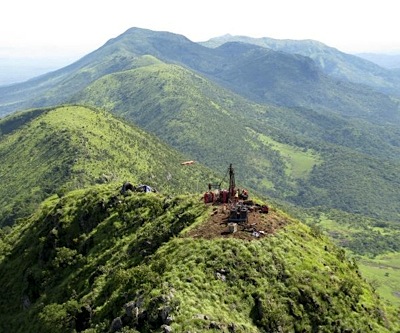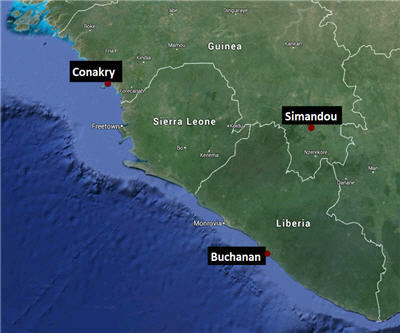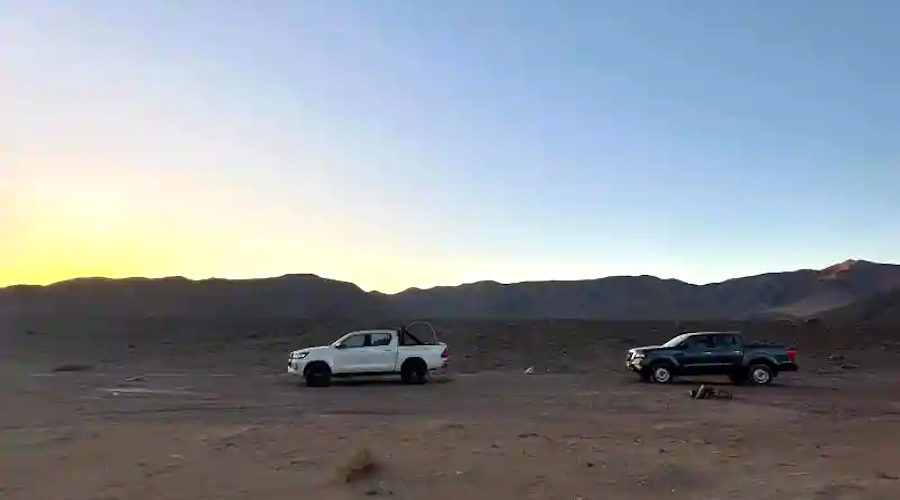Game-changing $20 billion African iron ore deal signed

A deal between the Guinea government and Rio Tinto (LON:RIO) regarding the Simandou iron ore development was inked on Monday.
The deal with Anglo-Australian giant and its partner – China’s Chalco together with the World Bank – sets out conditions for the associated infrastructure for the ambitious $20 billion project.
A sticking point in the negotiations was the route and funding of a railway to get the Simandou area ore to port.
Monday’s agreement calls for a new 700km railway across the country to Conakry, Guinea’s capital in the north, at a conservatively estimated cost of $7 billion, Reuters reports:
It would also need a deep-water port at Morebaya costing a further $4-billion, and support infrastructures estimated to cost a minimum of $2.5-billion, documents seen by Reuters showed on Monday. The port and railway would eventually be expanded to handle up to 100-million tonnes of minerals a year.
Because of the economic benefit to the impoverished West African nation Guinea this route was chosen in stead of a much shorter and cheaper railway to the deep Buchanan port in neighbouring Liberia to the south. The developers will operate the infrastructure for thirty years whereafter ownership reverts to Guinea.
Rio Tinto CEO Sam Walsh said in a speech recently that “the infrastructure that brings Guinea’s natural resource wealth to global markets can do so much more for the country,” pointing out that once Simandou is fully operational, it will contribute an estimated $7.6bn to the Guinean economy each year, dwarfing the amount of aid payments the country receives.
Guinea is home to some of the richest and easily exploitable iron ore fields outside of Australia’s Pilbara region and top producer Vale’s Brazilian home base.
Initially scheduled for next year, even with the new deal in place initial exports is doubtful for this decade. Monday’s deal committed the partners to producing a feasibility study within little over a year, another more than two-half-years for financing and production within a decade.

Rio acquired the rights for the vast mountain deposit hosting some of the world’s highest-grade ore more than 15 years ago.
Rio Tinto is developing the southern part of Simandou and has already spent more than $3 billion building open pits, but the scale and scope of the development had been placed in doubt by the fall in the price of iron ore and a looming supply glut.
At full production Simandou would export up to 95 million tonnes per year – that’s a third of Rio’s total capacity at the moment – and would catapult Rio past Vale as world number one.
Simandou would by itself be the world’s fifth-largest producer behind Australia’s Fortescue Metals and BHP Billiton.
The northern part of the Simandou concession was held by BSG Resources and Brazilian giant Vale (NYSE:VALE), but the Guinea government withdrew the mining permit in April, accusing BSGR of obtaining its rights through corruption in 2008.
Rio Tinto has filed its own lawsuit against both Vale and BSGR for what it qualifies as a “steal” of its previously-owned concessions.
Fellow Anglo-Australian miner BHP Billiton has decided to pull out of the country and is in the process of selling its stake in a nearby iron ore project called Nimba.
More News
{{ commodity.name }}
{{ post.title }}
{{ post.date }}




Comments